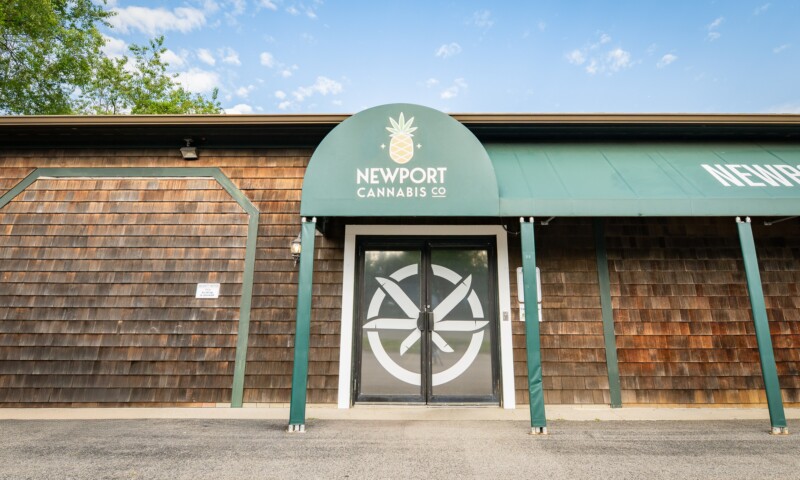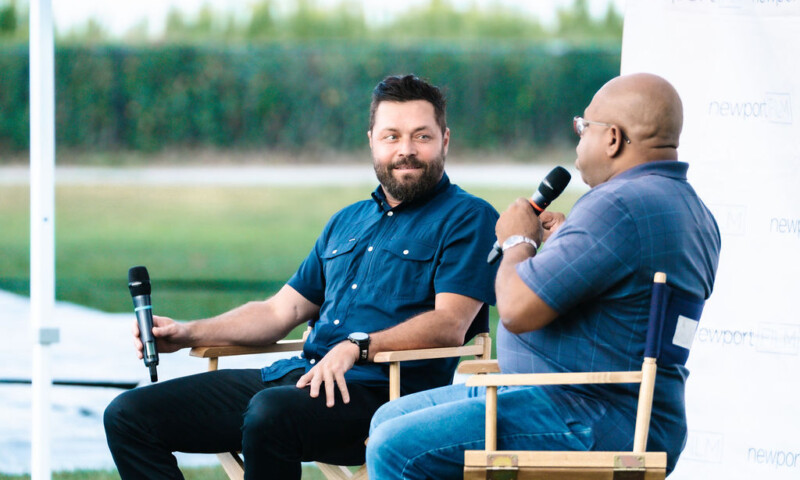By Nancy Austin, PhD – newportFILM Outdoors Summer 2017 Humanities Blogger
With support from the Rhode Island Council on the Humanities (RICH)
When the Redwood Library and Athenaeum opened its doors in 1750, colonial Newport was part of the British Empire and women were barred from receiving a patent of invention for their intellectual property. This legal bias against women changed after the American Revolution when the First Congress enacted the gender-neutral American Patent Act of 1790. The first American patent granted to a woman was awarded in 1809 to Mary Dixon Kies, from nearby Connecticut, for an invention relevant to the multi-million dollar domestic straw hat industry. Rhode Islanders should take note, however, that the pioneering innovator creating the straw bonnet industry was an entrepreneurial young Providence woman, Betsey Metcalf. (Her nephew’s wife, Helen Adelia Rowe Metcalf, later founded the Rhode Island School of Design in 1877.) In the mid-nineteenth-century, Betsey Metcalf’s achievement was so important to the state’s marketing of itself as an innovation hub, that the Governor of Rhode Island in 1858 commissioned a portrait of Betsey Metcalf as the first in a series of public art works celebrating local change-makers. Governor Dyer went on to have the painting hung in the civic cross-roads that was Union Train Station. At the public dedication, this proclamation was read:
“Resolved, That Mrs. [Betsey Metcalf] Baker, as the first inventor in the United States of the art of plaiting, or braiding straw for ladies’ hats and bonnets, — a business which now gives employment to thousands of persons and millions of capital, — is especially entitled to honor and respect from this society, incorporated for the encouragement of domestic industry in this her native State.” (December 1858)
Betsey Metcalf’s achievement gained exemplary civic acclaim only late in her life, when she was in her seventies. Her portrait eventually found its way into storage at the Rhode Island Historical Society. Perhaps of more enduring importance was the documentation and oral histories sought out before Metcalf’s death in 1867 and saved for the historical record. Without this kind of raw material gathered and preserved, our palette for painting a richly diverse picture of American innovation falls flat.
I see Bombshell: The Hedy Lamarr Story, this week’s newportFILM documentary as an offering helping the long arc of history bend toward justice. Like Betsey Metcalf, Hedy Lamarr was an innovator who had to wait until the end of her life for recognition and documentation. Although Lamarr’s 1942 patent is now widely acknowledged for pioneering the electromagnetic spectrum hopping that facilitated WiFi, Bluetooth and other fundamental technologies of our electronic age, it was not until 1997, when Lamarr was in her eighties, that she received public recognition from the Electronic Frontier Foundation (EFF) and elsewhere. At the Electronic Frontier Foundation ceremony, Hedy Lamarr was given civic acclaim for patenting “the concept of ‘frequency-hopping’ that is now the basis for the spread spectrum radio systems used in the products of over 40 companies manufacturing items ranging from cell phones to wireless networking systems.” Bombshell chronicles the challenges Lamar faced at the peak of her mental prowess, when the book was definitely judged by its cover.
It is only now, at this point in this blog post, that I mention that Hedy Lamarr had a beautiful mind and was also a beautiful movie star. For me, the Hollywood part of the story is interesting, but almost beside the point. She didn’t contribute as an inventor despite being a movie star. She contributed despite being a creative tech woman. When, in her seventies, Hedy Lamarr commented that although she was proud to have made a wartime contribution, “I can’t understand why there’s no acknowledgment when it’s used all over the world… Never a letter, never a thank you, never money. I don’t know. I guess they just take and forget about a person.” (Macdonald, 321)
We used to ask: who and where are the great women artists lost in history? Today, the same question is being asked with pressing concern about women in tech. Where are the women innovators and inventors? Can we turn the tide and help all the talented girls and women among us reach the full potential of their beautiful minds so that they might contribute visionary futures we can’t yet imagine? It is an economic imperative today to nourish all of our talent at this epochal time of technological change and a divided democracy. The Patent Act of 1790 was gender neutral, and like so many statements of the American Dream, still a work in progress.
So. I’m going to see newportFILM’s documentary on Hedy Lamarr this Thursday because I’m inspired by the wattage of smart women who persevere. The glamor stuff is an interesting foil, for sure. But I’ll be there first and foremost to pay witness to a creative tech women finally getting her (posthumous) due. I can’t wait to be sitting on the lawn of the historic Redwood library with my fellow digital-age Newporters, noticing everyone periodically burying into their cell phones to communicate far and wide on technology that hinges in part on Hedy Lamarr’s beautiful mind. And I’ll be sending up my own kharmic vibes to Hedy Lamarr, Betsey Metcalf, and the unknown pantheon of innovative women whispering to one another out there in the cosmos, I’m sure: “You have a beautiful mind. Go for it! Invent passionately, like no one is watching. It’s beautiful!”

Film screening details:
Bombshell: The Hedy Lamarr Story
Thursday, June 29
8:40pm
Redwood Library and Athenæum Lawn (50 Bellevue Ave, Newport, RI)
More at bit.ly/HedyDoc
newportFILM Outdoors is presented by Lila Delman Real Estate International.
Resources:
Austin, Nancy. “The Zen of Now: RI Governor supports Women Inventors – a true story from 1858.” Women’s Fund of Rhode Island Blog, 2 September 2014.
Austin, Nancy. The Women Who Founded RISD , 2017. Available on Amazon
Hintz, Eric S. “Counting Women Inventors.” Lemelson Center for the Study of Invention and Innovation Blog, 21 March 2017, www.invention.si.edu.”
Macdonald, Annie L. Feminine Ingenuity: How Women Inventors Changed America. (1994) Available on Amazon.
“Movie Legend Hedy Lamarr to be Given Special Award at EFF’s Sixth Annual Pioneer Awards.” Electronic Frontier Foundation website, 11 March 1997.
Petrovic, Karli. “How Hedy Lamarr Invented Early Wireless Technology.” IQ.Intel.com Blog, 8 March 8, 2016.




